Camping offers an unparalleled escape from the hustle and bustle of everyday life, and with careful preparation, your outdoor adventure can be both enjoyable and stress-free. Whether you’re seeking a peaceful retreat or an exciting family getaway, immersing yourself in nature provides a unique and rewarding experience. CONDUCT.EDU.VN is dedicated to providing comprehensive guidance, ensuring your first camping trip is a resounding success with the right camping gear and essential camping skills. Dive into the wilderness, embrace Leave No Trace principles, and discover the joy of camp cooking, making every moment memorable with proper camp etiquette.
1. Getting Started: Your First Steps into the Outdoors
Embarking on your camping journey begins with selecting the right shelter—one that’s user-friendly, waterproof, and provides a safe haven. Comfort and safety while camping depend significantly on whether you opt for a tent or explore alternative lodging. Tents are a popular choice for beginners due to their portability and adaptability.
Tents come in a variety of shapes and sizes, offering different levels of weather protection and insulation. Some are designed for solo adventurers, while others feature multiple rooms for family camping. Before deciding on the best tent for your initial camping experience, consider the following crucial aspects:
- Your Specific Needs: While tents are generally beginner-friendly, they might not be suitable for everyone. Older adults or those who find it challenging to sleep on the ground might prefer more comfortable options. Additionally, some tents may not be ideal for very young children or pets.
- Weather Conditions: Tents lack built-in air conditioning or heating. In hot weather, you can set up your tent in a shaded area or use a battery-operated fan, but some might prefer avoiding tent camping altogether during intense heat. Similarly, extremely cold temperatures can be a deterrent. Although tent heaters are available, they require strict adherence to safety guidelines and might not be appropriate for every environment.
- Your Experience Level: If you’re new to camping, learning how to pitch a tent and create your campsite is an excellent starting point. However, some tents are more complex and might require assistance or prior training. Always consult the tent’s user manual and watch instructional videos before setting out.
2. Mastering Tent Pitching: Essential Tips for Beginners
Proper tent assembly varies based on the tent type, the location, and any additional accessories you plan to use. For beginner campers, here are essential tips for setting up your tent effectively:
- Understanding Your Tent: Familiarize yourself with the type of tent you have to ensure correct assembly. Common types include dome tents, A-frame tents, popup tents, and ridge tents. Consult your tent’s manual for specific instructions.
- Selecting a Level Spot: Choose a flat area for your tent, preferably near shade and away from fire pits, mud, rocks, or tree roots. Avoid areas where rainwater might collect and seep inside.
- Using Tent Stakes Wisely: If using stakes to secure your tent, bring extra if possible. Ensure stakes are firmly planted in the ground and be cautious when walking nearby to avoid tripping hazards.
- Always Use a Tarp: Even if rain isn’t expected, a tarp can protect your tent from unexpected drizzles and insulate it from the elements. It also helps prevent overheating during summer camping.
- Enhancing Comfort: To make your tent more comfortable, consider choosing a model with windows for airflow and natural light. Bring a battery-operated fan or tent-safe heater to create your ideal sleeping environment. Sleeping off the ground using a cot, inflatable mattress, or sleeping pad can provide extra warmth, dryness, and comfort, reducing muscle soreness. Look for water-resistant tents and hang a tarp over the roof for added rain protection.
3. Tent Camping vs. Alternative Lodging: Making the Right Choice
When deciding between tent camping and other lodging options, each offers unique advantages. Here’s a comparison to help you make the best choice for your needs:
| Feature | Tent Camping | Alternative Lodging (e.g., Cabins, Yurts) |
|---|---|---|
| Cost | Generally more affordable | Typically more expensive |
| Comfort | Can be less comfortable, requires more gear | Usually more comfortable with beds, furniture |
| Convenience | Requires setup and teardown | Less setup required, more convenient |
| Weather Protection | Dependent on tent quality and setup | Generally better protection from elements |
| Amenities | Fewer amenities, often reliant on campground facilities | More amenities, such as private bathrooms, kitchens |
| Experience | More immersive nature experience, greater sense of adventure | More relaxed experience, less connected to nature |
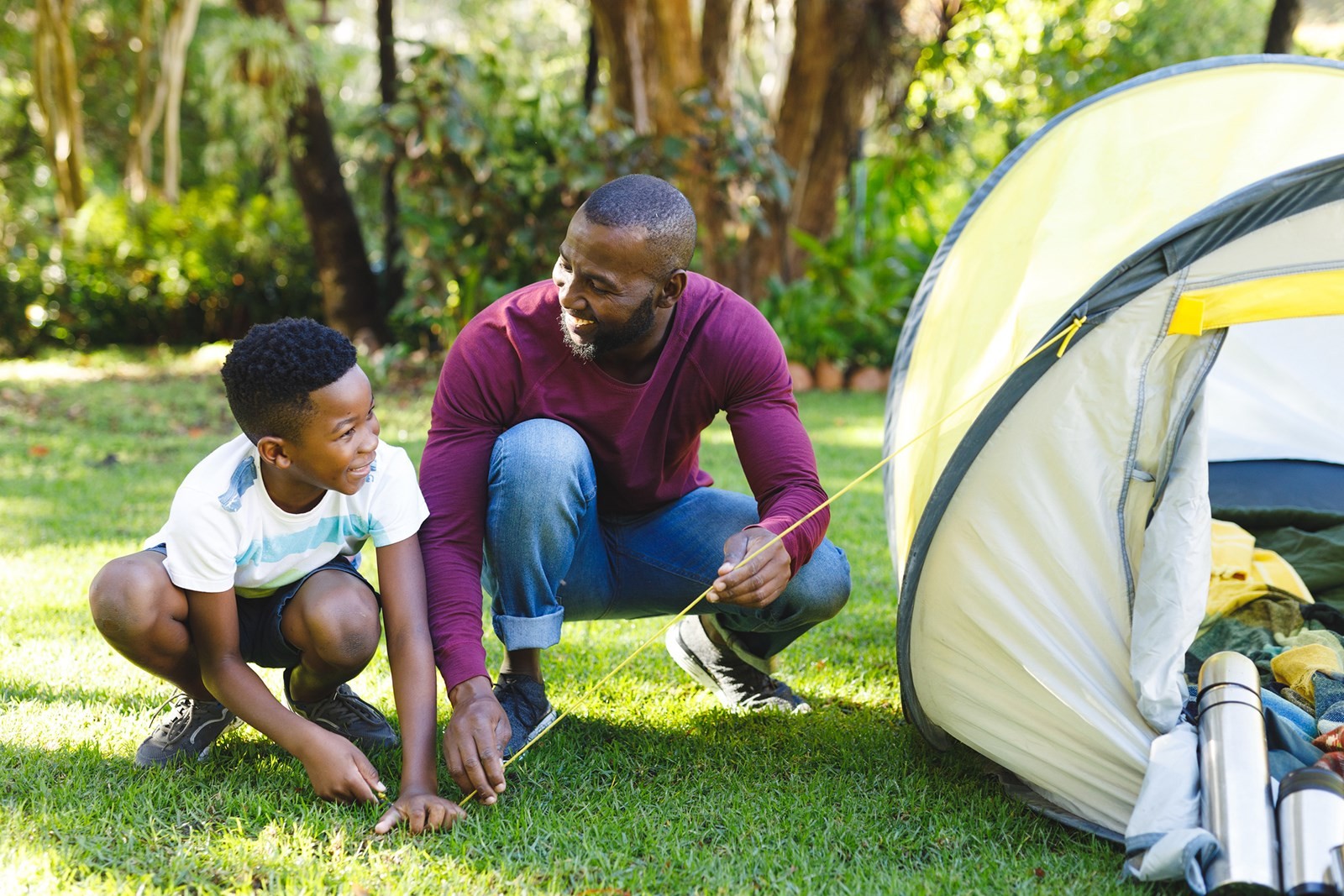
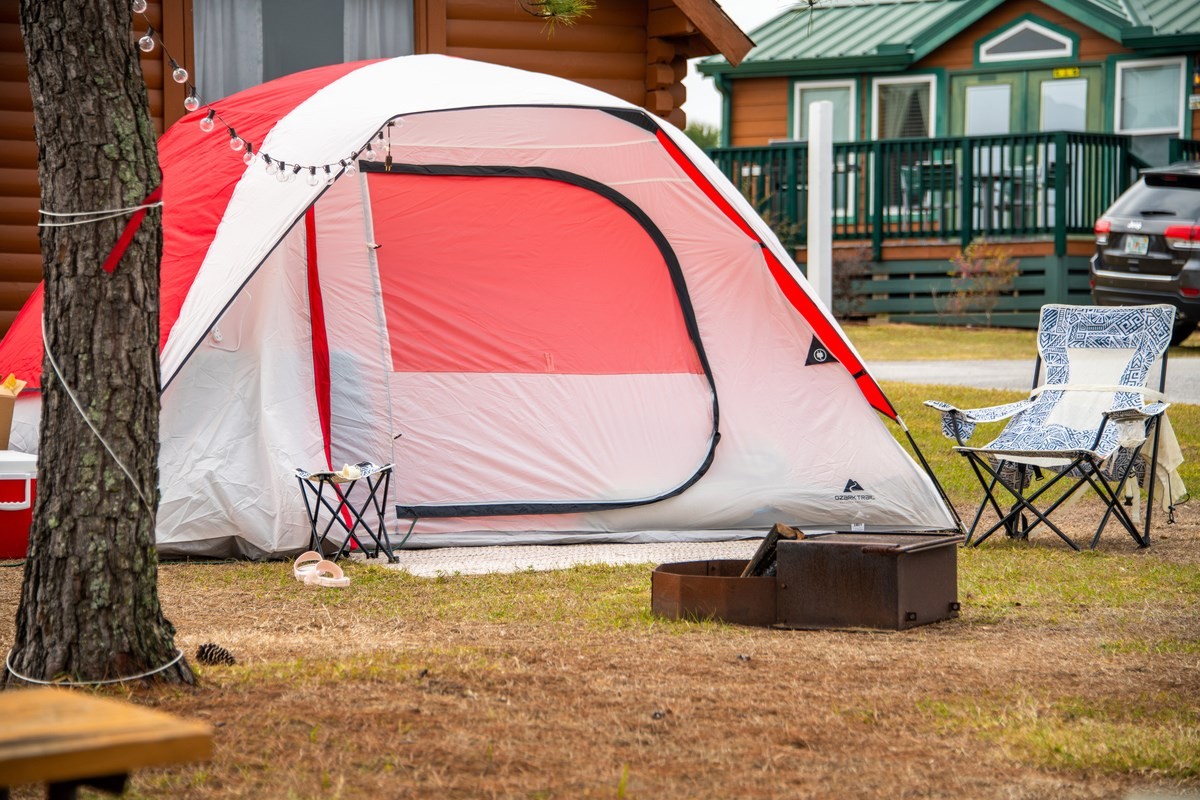
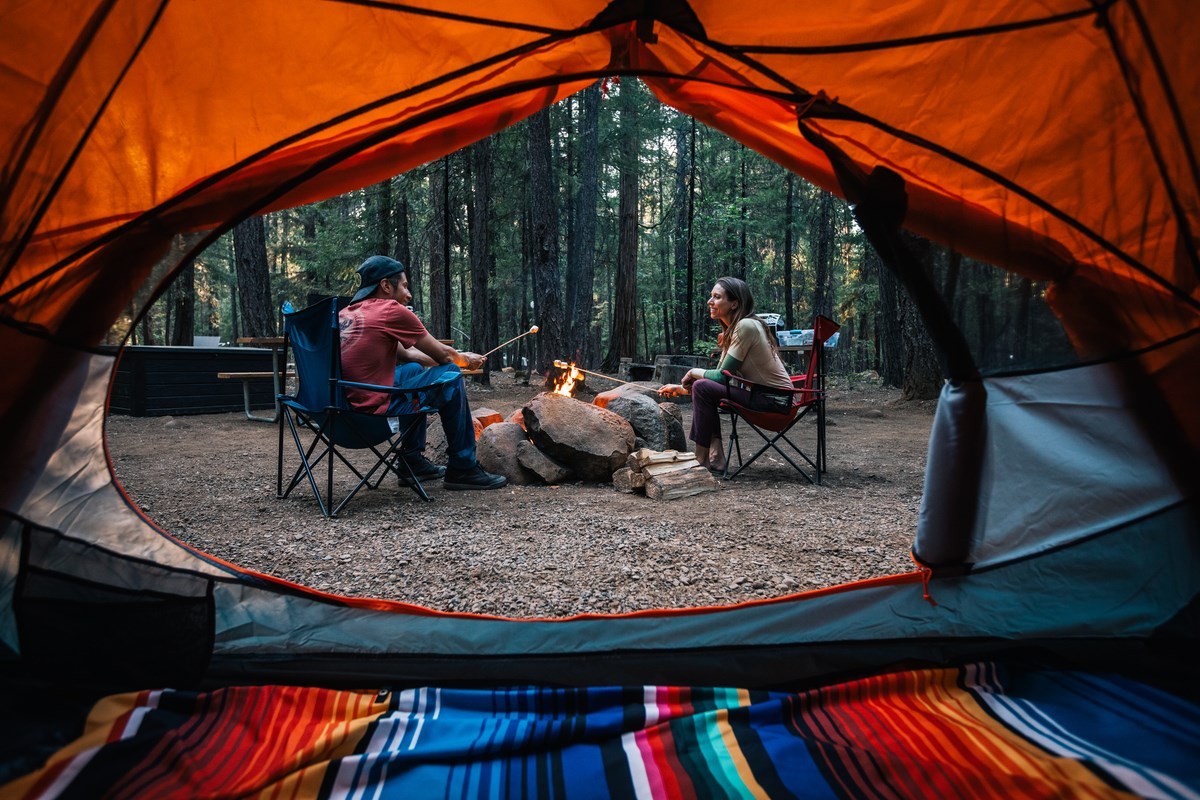
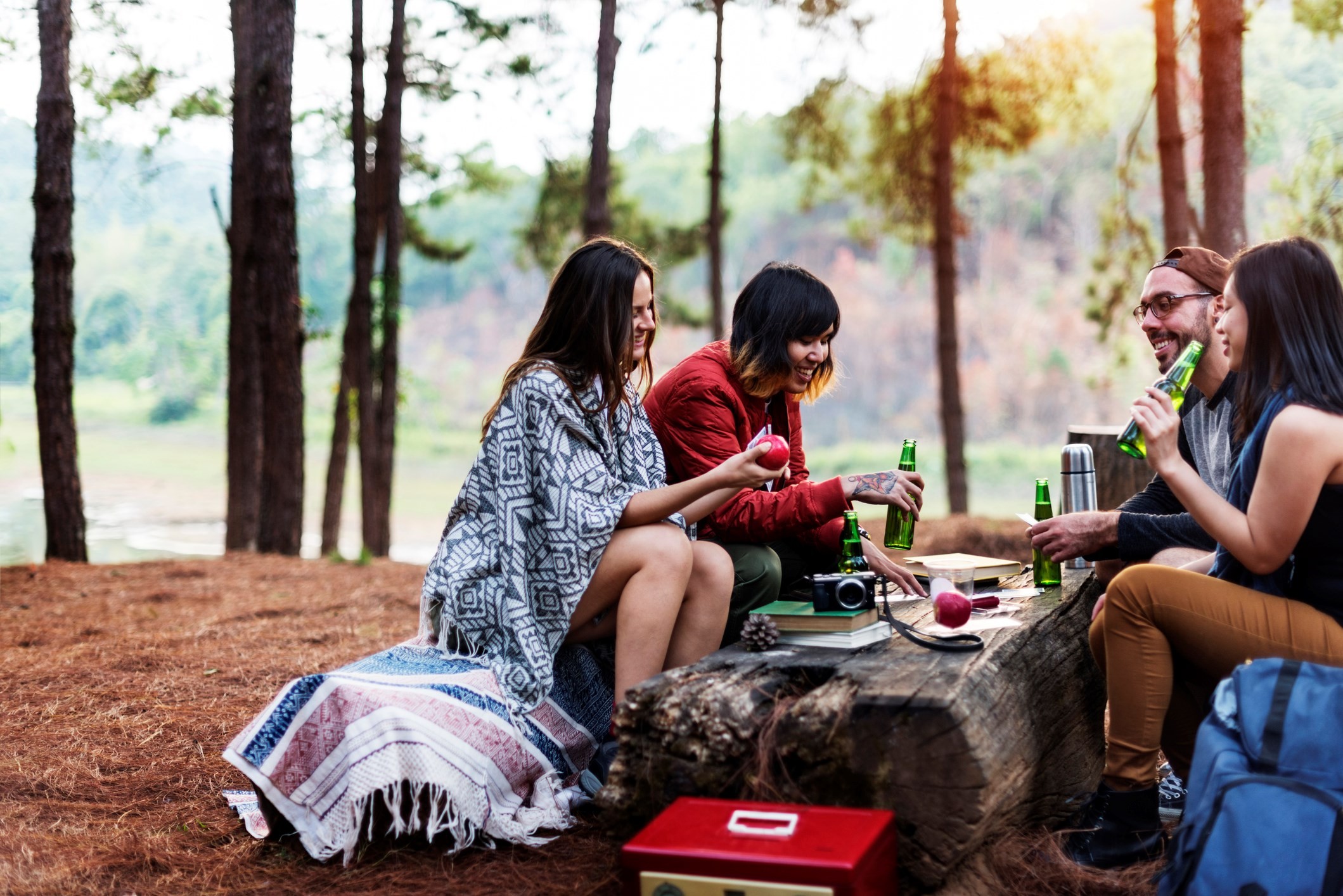
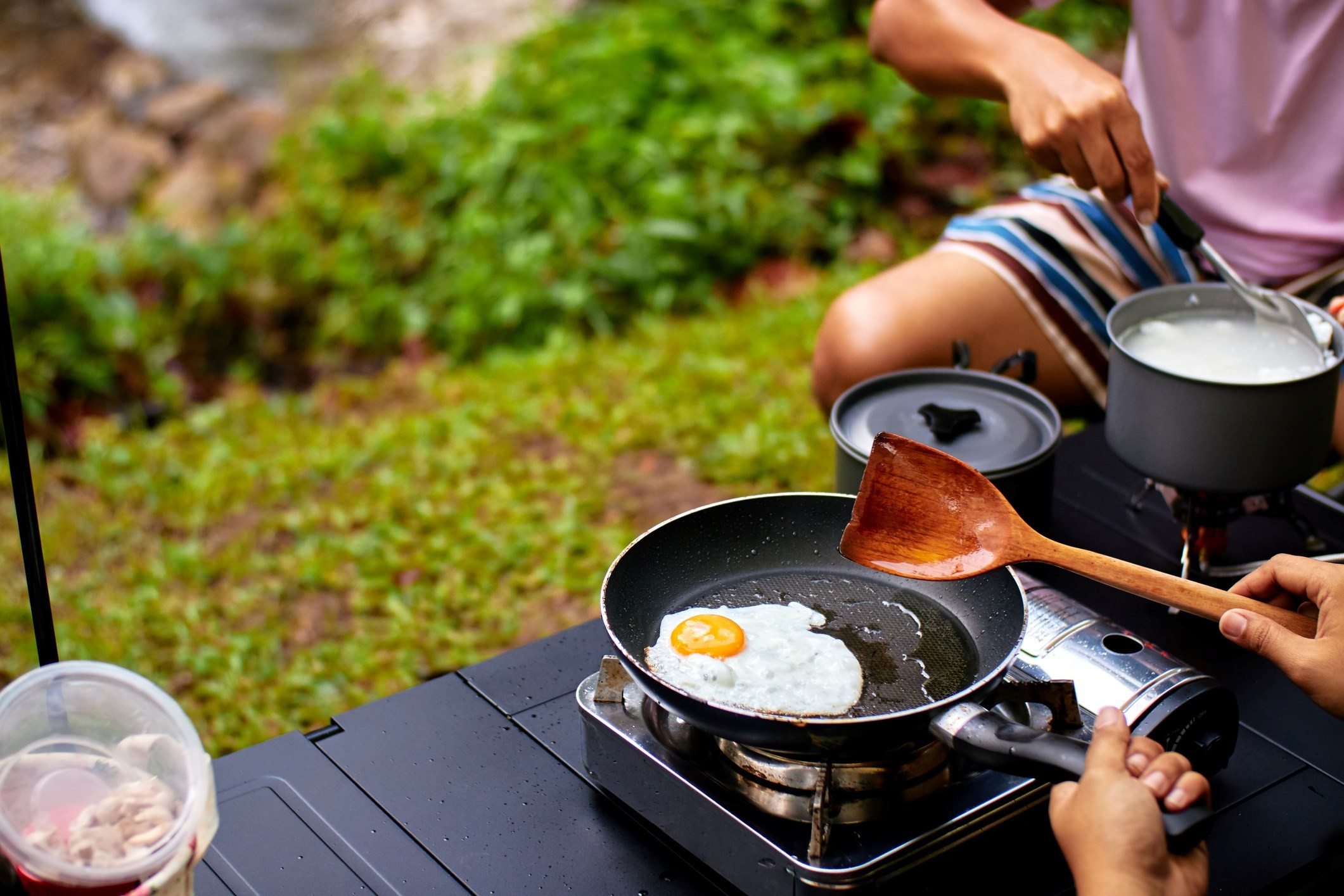
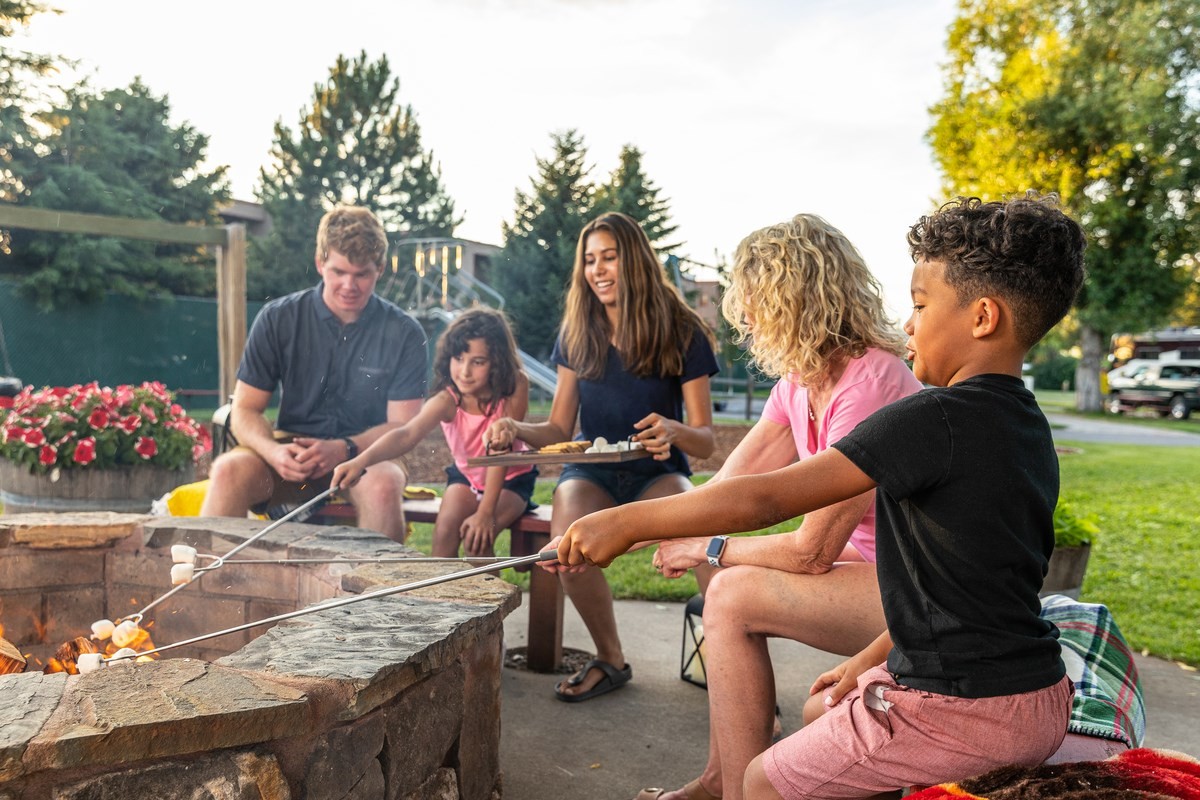
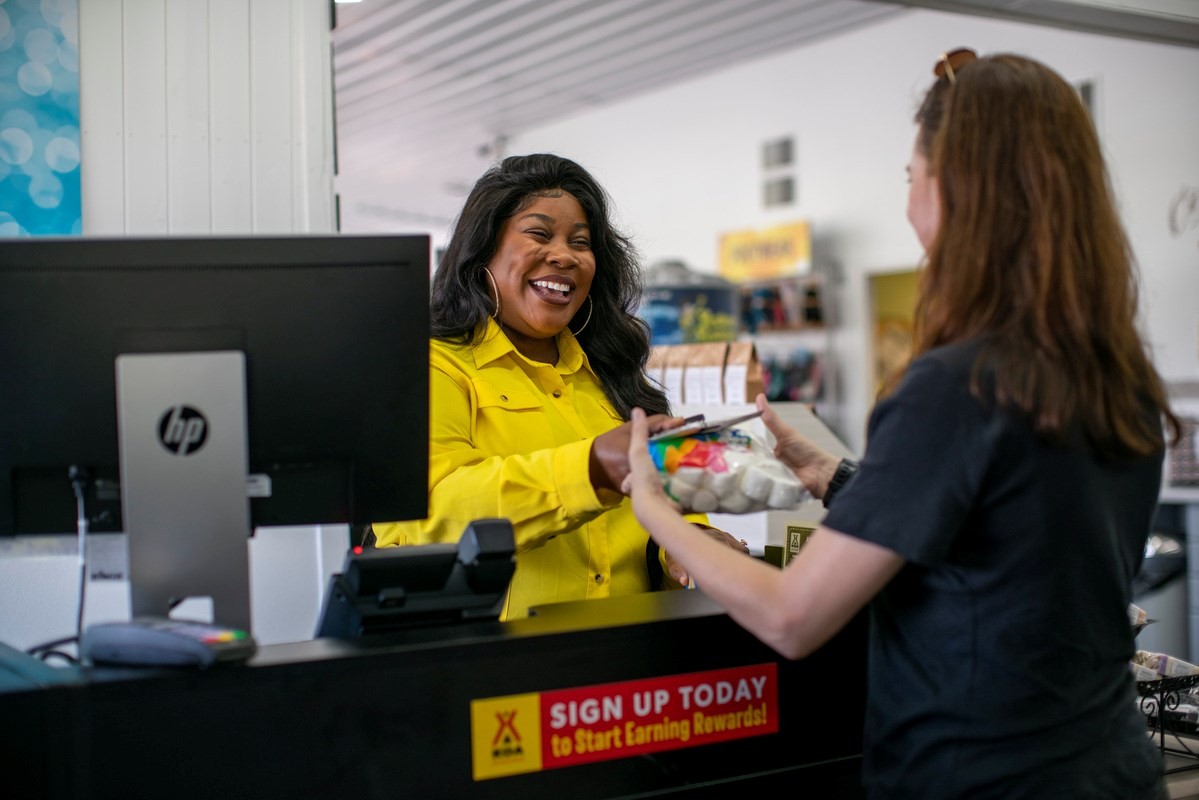

Always adhere to good camping etiquette. If camping near others, maintain a reasonable volume at night and early in the morning, and avoid shining flashlights toward other campsites. Practice Leave No Trace principles by cleaning up after yourself and leaving your campsite in better condition than you found it. These practices are essential for preserving the natural environment and ensuring a pleasant experience for everyone.
4. Choosing the Perfect Camping Location: Key Considerations
One of the most critical tips for first-time campers is selecting the right location. Consider camping at a place like KOA, where you are never far from essential amenities like clean restrooms and laundry facilities.
When choosing a camping location, always consider the following:
- Your Goals: Ask yourself why you’re planning this camping trip. Is it to explore new places, visit historical sites, immerse yourself in nature, or spend quality time with loved ones around a campfire? Your camping goals will help you determine the best location.
- The Season: Choose a location suitable for the season, accounting for potential rainfall, temperatures, and the best seasonal views. Consider your comfort level with different climates.
- Campsite Accessibility: If traveling with young children, some locations—like those requiring backpacking or mountain treks—may be too challenging for beginners. Choose a location that is accessible to everyone in your group.
Before booking your campsite, decide whether you want to travel far from home or stay closer to familiar surroundings.
4.1. Advantages of Staying Close to Home
Many campers prefer the easy commute and reduced planning that comes with camping closer to home. In fact, more than half of campers travel less than 100 miles from their homes, according to surveys.
The benefits of camping closer to home include:
- Convenience: In some cases, you can return home if you forget essential items like cooking tools or a sleeping bag.
- Ease: Shorter travel distances are ideal for easy, beginner-friendly trips.
- Flexibility: Locations close to home require less planning and travel arrangements, providing scheduling flexibility.
- Exploration: You can explore your local area and discover new favorite destinations you can easily revisit.
- Support: In case of an emergency, it’s more likely that someone you know can assist if needed.
4.2. Advantages of Exploring a New Place
The primary benefit of camping far from home is the opportunity to see and experience new places. Popular destinations include state and national parks, forests, tourist attractions, cities with vibrant cultural scenes, and family-friendly festivals.
Additional benefits of exploring faraway places on your camping trip include:
- New Experiences: New places offer new experiences, including different cultural attractions, regional cuisine, and wildlife.
- Scenic Routes: Long road trips or flights allow you to enjoy diverse and stunning views along the way.
- Meeting New People: You can meet people from different regions and learn about their cultures.
- Extended Vacation: Traveling longer distances justifies taking an extended vacation.
- Relocation Research: If considering a move, exploring the local scenery is a great way to determine if a place is right for you.
- KOA Locations: With numerous locations across North America, you can rely on KOA to meet your needs wherever you travel.
5. Camping Essentials for Beginners: What to Pack
A successful camping trip begins with knowing what to bring and how to use it. Using a camping checklist of essential items helps keep your belongings organized and ensures you don’t forget anything important.
5.1. Essential Camping Gear
Some essential camping gear for beginners includes:
- Sleeping Gear: Bring everything you need for a good night’s sleep, including quilts, sleeping bags, sleeping pads, blankets, an inflatable mattress, or a cot. As your body adjusts to new sleeping arrangements, bringing familiar pillows from home can help you adjust more easily. Some new campers also find eye masks or white noise machines helpful for falling asleep more quickly.
- The appropriate type of sleeping bag depends on wet or dry weather and the maximum low temperature. Thin sleeping bags are generally only good for summer conditions, while others are designed for various levels of frigid temperatures. If you’re staying out in the ice and snow, you definitely want to have the right kind of sleeping bag, so check the labels before you buy them. For winter camping, it’s also a good idea to bring more blankets than you might need.
- Campsite Needs: Headlamps, flashlights, lanterns, and outdoor lighting like torches or LED tube lights will keep your campsite well-lit. You will also need approved firewood, a cooler and ice, a water dispenser, matches, a lighter, and fire starter.
- Electronics: For items that require batteries, bring extra in case your lamp or flashlight stops working. A portable charger or power bank for your phone or other devices is also good to have on hand. If reception is poor in your area, invest in a Wi-Fi extender to stay connected.
- Furniture and Decorations: Add style and comfort to your campsite with camping chairs, plastic tablecloths and clips for the picnic table, insect-repellant candles, small tables, shade structures, and portable rain pavilions. An outdoor rug will help catch dirt and grass before you go inside your tent, RV, or cabin.
- Hygiene Items and Toiletries: Bring towels, washcloths, soap, shampoo, shower shoes, your toothbrush and toothpaste, and your contact lens case and solution, if applicable. You might also enjoy the comfort of a soft robe and slippers.
- Cleaning Supplies: Do not forget to clean up your campsite after each meal and before you leave. Bring trash bags, paper towels, a cleaning sponge, and wipes, if necessary.
- Personal Belongings: Personal belongings include your wallet, spare cash, keys, lip balm, and any licenses or permits you need to camp or hike. You should also pack event tickets or parking passes you plan to use during your stay.
- Safety Equipment: Stay safe with insect repellent, a water bottle, sunscreen, a first-aid kit, and a portable fire extinguisher. A local field guide may also be useful if you plan to explore a new area.
- Kitchen Supplies: Bring kitchen essentials, like pans, tongs, spatulas, a grill grate for cooking over the fire if desired, roasting forks, a coffee percolator, dishes, and utensils. Ensure all pots and pans are rated for campground use and can withstand cooking over an open flame.
- Pet or Children’s Supplies: If you are camping with your pet or child, you will also need to bring their items. For pets, this means a leash and harness, food and water bowls, toys, a pet first-aid kit, ID tags, bedding, and vaccination records. For children, you might need a stroller, portable crib or play area depending on their age, toys, special first-aid supplies, and child-friendly food.
5.2. What to Wear
Clothing choices depend on your destination, the season, weather conditions, and planned activities:
- Rain gear, including boots, a water-resistant coat, and an umbrella.
- Light layering pieces, including long-sleeve shirts, lightweight tops, underclothes, and jackets.
- Extra socks and underwear.
- A swimsuit or swim trunks with sandals or flip flops.
- A sunhat, visor, or beanie, weather depending.
- Shoes for all activities, including hiking boots and comfortable walking sneakers for sightseeing and tours.
- Winter clothing, if applicable, including thermal layers, gloves, a scarf, an insulated coat, thick socks, and long pants.
6. Meal Planning for Camping: Tips and Essentials
Planning your meals before you go is the easiest way to save time and make camp cooking a breeze. This helps you stick to a budget and prepare items ahead of time. Consider on-site dining options or local restaurants you want to try while you are out exploring.
6.1. Camp Cooking Must-Haves
Regardless of which recipes you choose to cook, there are some camp cooking must-haves that all campers should have on-hand:
- Cooking Essentials: Pantry staples like seasoning blends, spices, dried herbs, cooking oils, salt and pepper, condiments, and sauces will give your food flavor. Choose your essentials based on your meal plan. For example, if you plan to barbecue or grill meats, you may want to bring along barbecue rubs or sauce.
- Snack Items: Choose non-perishable snacks that travel well, like kettle corn or popcorn, jerky, trail mix, chips, pretzels, cereal, granola, or s’mores ingredients.
- Meal Staples: Proteins, starches, and carbs will help keep you full and energized. Popular camping meals usually involve potatoes, eggs, grilling meats, breakfast meats, fresh produce, sandwiches, canned beans and soups, and bottled water, juice, and soft drinks.
6.2. Tips for Planning Your Meals
For easy meal planning, use these tips:
- Consider Dietary Preferences: If you are camping with a group, consider everyone’s individual preferences and include vegetarian, pescatarian, vegan, dairy-free, or gluten-free options if necessary.
- Prep Before You Go: To save space and time at the campsite, prep what you can at home. Cut, core, and de-seed fresh produce and mix up some omelet ingredients for an easy pour-and-cook breakfast.
- Use Storage Containers: Plastic food storage containers and zip bags are great for storing pre-prepped meals and keeping them secure inside your cooler.
- Choose Multi-Use Ingredients: Choose recipes that utilize similar ingredients — like potatoes, a specific sauce, or fresh veggies — to keep preparation simple and take up less space in your cooler or food storage container.
- Include Extras and Snacks: You will likely be more active than usual, especially if you engage in any outdoor recreation. Plan for high-energy snacks and extra meals to keep you energized. Find meal inspiration on the KOA camping recipe database, where you will find ideas for cooks of all experience levels and dietary preferences.
7. Essential Tips for First-Time Campers: Making the Most of Your Trip
With a little pre-planning, your first camping trip is sure to be an exciting time for all. Use these camping beginner tips to help you make the most of it.
7.1. Test New Gear at Home
Whether you are a beginner or an experienced camper, you should always test new gear at home first. Assemble your tent in your yard for practice and to make sure everything is included and works correctly. The practice will also make it easier to assemble when you get to the campsite.
Make sure your sleeping bag is comfortable and that all flashlights, headlamps, and lanterns work, too. Pack extra batteries, just in case. If you plan to use a portable cooking stove or grill, give it a test run. Also, ensure all hiking backpacks or day packs fit securely on your back and make adjustments if necessary.
7.2. Celebrate a Milestone Event
Camping is the perfect way to spend any vacation or weekend trip, but it is also a memorable way to celebrate milestone events, such as:
- Birthday parties
- Anniversaries and romantic getaways
- Bachelor and bachelorette parties
- Bridal and baby showers
- Family or friend reunions
Check with your campground to learn more about group lodging options, policies, and on-site facilities.
7.3. Embrace Year-Round Camping
Camping isn’t just for the summer months. Each season brings unique opportunities and experiences.
- Summer Camping: Ideal for warm weather activities like swimming, hiking, and outdoor games.
- Fall Camping: Enjoy cooler temperatures, stunning foliage, and fewer crowds.
- Winter Camping: For the adventurous, winter camping offers a unique challenge and the beauty of snow-covered landscapes (requires specialized gear and preparation).
- Spring Camping: Witness the rebirth of nature with blooming flowers and mild weather.
7.4. Bring Games and Recreational Gear
Don’t forget the gear and equipment you need to participate in outdoor or indoor fun. If it is your first time camping, finding the right recreational activities for you will likely take some experimentation. Stay somewhere that lets you try as many new things as possible.
Many campers enjoy the following outdoor activities:
- Hiking
- Fishing
- Sightseeing
- Biking
- Bird watching
- Canoeing, kayaking, and boating
- Backpacking
- Trail running
- Watersports
- Horseback riding
- Rock climbing
Have fun at your campsite with lawn games, including ladder ball, cornhole, horseshoes, croquet, and yard bowling. You should also pack rainy day activities, like cards, board games, and books.
7.5. Campground Guidelines: Ensuring Safety and Respect
Always follow all campground rules and guidelines, which are in place for your safety, as well as that of others. Most campgrounds have standards for things like:
- On-site parking and number of vehicles
- Unregistered visitors
- Pet type and behavior
- Excessive noise during quiet hours
- Keeping your campsite and all public areas clean
Staff members are happy to provide a list of applicable rules to follow, or you can call the campground before placing a reservation to confirm the necessary details.
7.6. Embrace Spontaneity: Try New Things and Learn New Skills
As you research how to start camping and assemble your packing list and local guidebooks, it can be easy to over-plan or try to schedule each activity. Camping is best enjoyed when you leave some of it up to adventure and spontaneity. While it is essential to have the gear you need to stay safe and comfortable, lean into those moments that present themselves to you — like an unexpected hiking path, sharing a meal with new friends, or learning a new skill or hobby while traveling.
7.7. Camping With Kids: Creating Lasting Memories
Camping with kids is an excellent way to create lasting memories and foster a love for the outdoors. It offers a unique opportunity to disconnect from technology and reconnect with nature and each other. Consider these tips for a successful family camping trip:
- Plan Age-Appropriate Activities: Choose activities that are suitable for your children’s ages and abilities.
- Pack Comfort Items: Bring favorite toys, books, and blankets to help children feel comfortable in their new surroundings.
- Involve Kids in Planning: Let children help plan the trip and choose activities to build excitement and anticipation.
8. CONDUCT.EDU.VN: Your Partner in Ethical Outdoor Adventures
At CONDUCT.EDU.VN, we believe that enjoying the great outdoors also means respecting it. Our comprehensive guides not only prepare you for a successful camping trip but also emphasize the importance of ethical behavior in nature. Learn about Leave No Trace principles, responsible wildlife interaction, and how to minimize your environmental impact.
Our website offers resources on various aspects of outdoor ethics, including:
- Leave No Trace Principles: Detailed guidelines on how to minimize your footprint while camping and hiking.
- Wildlife Etiquette: Tips on observing wildlife safely and respectfully, without disturbing their natural habitat.
- Sustainable Practices: Information on using eco-friendly products and reducing waste during your camping trip.
By promoting responsible camping, CONDUCT.EDU.VN aims to ensure that future generations can enjoy the beauty of nature.
Navigating the complexities of ethical outdoor behavior can be daunting. CONDUCT.EDU.VN simplifies this process by providing clear, actionable guidelines and resources, ensuring a responsible and enjoyable experience. Facing challenges in understanding camping best practices? Visit conduct.edu.vn for expert guidance and support. Contact us at 100 Ethics Plaza, Guideline City, CA 90210, United States, or via WhatsApp at +1 (707) 555-1234.
9. Frequently Asked Questions (FAQ) About Camping
Here are some frequently asked questions about camping, particularly for beginners:
- What is the best time of year to go camping? The best time to go camping depends on your location and preferences. Summer is popular for warm weather, but spring and fall offer milder temperatures and fewer crowds. Winter camping is possible with proper gear.
- What are the essential items to bring on a camping trip? Essential items include a tent, sleeping bag, cooking supplies, first-aid kit, flashlight, and appropriate clothing.
- How do I choose the right campsite? Consider factors like accessibility, amenities, and the type of activities you plan to do. Look for level ground, shade, and proximity to water sources.
- How can I protect myself from insects while camping? Use insect repellent, wear long sleeves and pants, and consider using a mosquito net for your tent.
- What are some tips for cooking while camping? Plan your meals in advance, prep ingredients at home, and use lightweight cooking equipment. Consider using a portable stove or cooking over a campfire.
- How do I store food safely while camping? Store food in airtight containers and keep it in a cooler with ice. Hang food from a tree to protect it from animals.
- What is Leave No Trace camping? Leave No Trace camping involves minimizing your impact on the environment by packing out all trash, staying on designated trails, and respecting wildlife.
- How can I stay warm while camping in cold weather? Wear layers of warm clothing, use a sleeping bag rated for cold temperatures, and consider using a tent heater (with caution).
- What should I do in case of a medical emergency while camping? Bring a well-stocked first-aid kit and know how to use it. In case of a serious emergency, contact emergency services or seek help from campground staff.
- How can I make my camping trip more comfortable? Bring comfortable bedding, camping chairs, and personal items like books or games. Consider using a sleeping pad or cot to sleep off the ground.